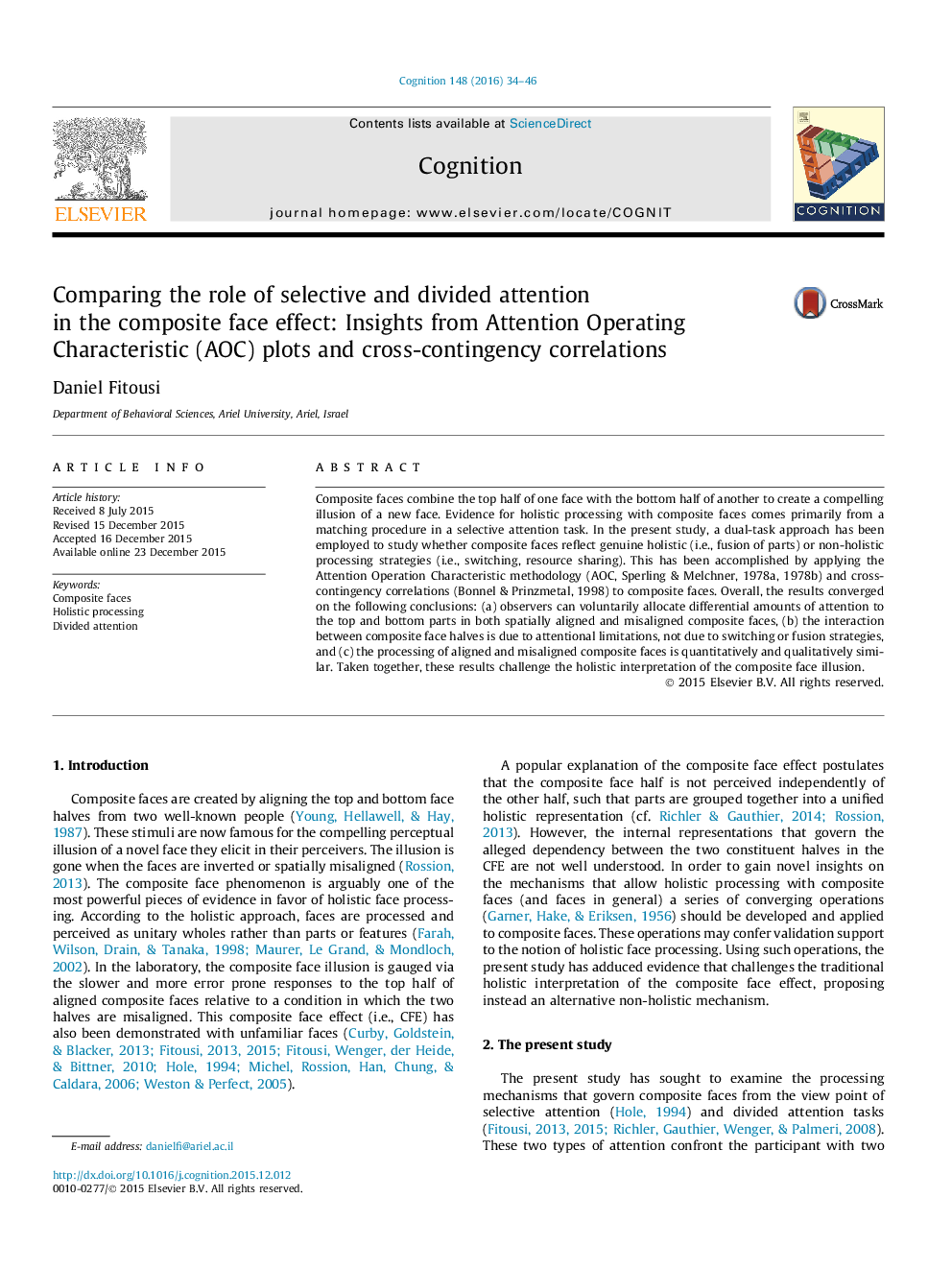| Article ID | Journal | Published Year | Pages | File Type |
|---|---|---|---|---|
| 926326 | Cognition | 2016 | 13 Pages |
Composite faces combine the top half of one face with the bottom half of another to create a compelling illusion of a new face. Evidence for holistic processing with composite faces comes primarily from a matching procedure in a selective attention task. In the present study, a dual-task approach has been employed to study whether composite faces reflect genuine holistic (i.e., fusion of parts) or non-holistic processing strategies (i.e., switching, resource sharing). This has been accomplished by applying the Attention Operation Characteristic methodology (AOC, Sperling & Melchner, 1978a, 1978b) and cross-contingency correlations (Bonnel & Prinzmetal, 1998) to composite faces. Overall, the results converged on the following conclusions: (a) observers can voluntarily allocate differential amounts of attention to the top and bottom parts in both spatially aligned and misaligned composite faces, (b) the interaction between composite face halves is due to attentional limitations, not due to switching or fusion strategies, and (c) the processing of aligned and misaligned composite faces is quantitatively and qualitatively similar. Taken together, these results challenge the holistic interpretation of the composite face illusion.
